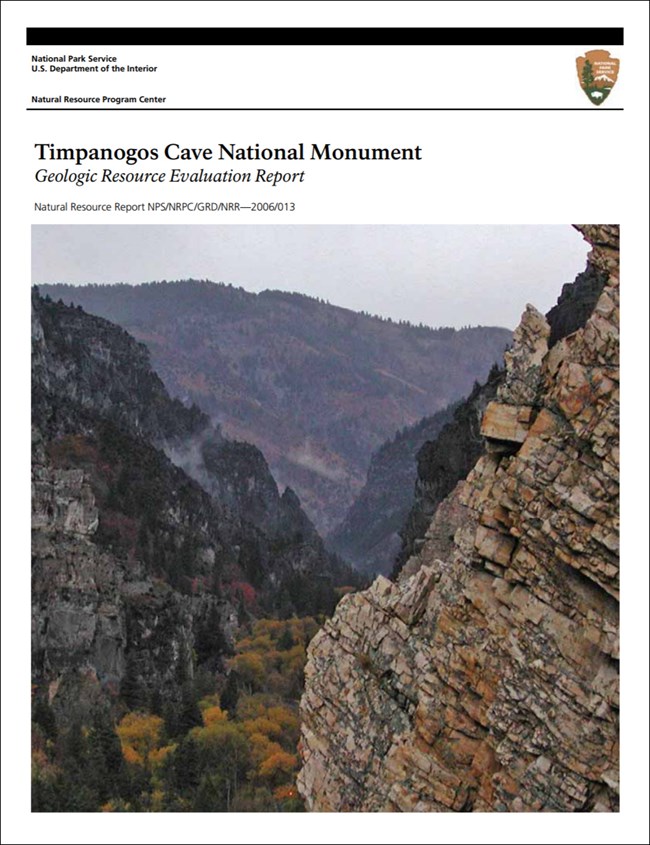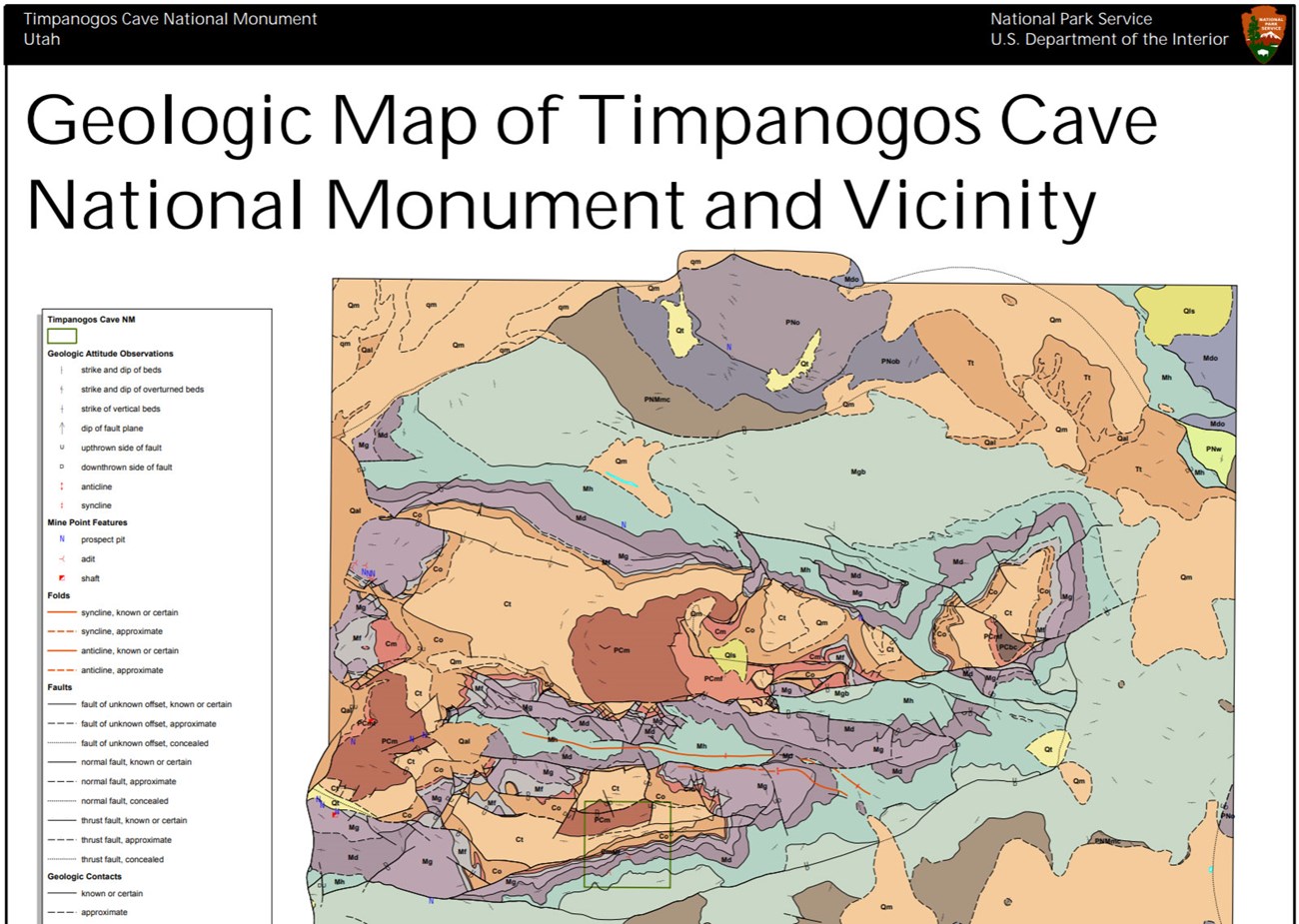Last updated: July 17, 2024
Article
NPS Geodiversity Atlas—Timpanogos Cave National Monument, Utah
Geodiversity refers to the full variety of natural geologic (rocks, minerals, sediments, fossils, landforms, and physical processes) and soil resources and processes that occur in the park. A product of the Geologic Resources Inventory, the NPS Geodiversity Atlas delivers information in support of education, Geoconservation, and integrated management of living (biotic) and non-living (abiotic) components of the ecosystem.

Introduction
Timpanogos Cave National Monument (TICA) is located high in the south wall of American Fork Canyon in Utah County, northern Utah. TICA was established October 14, 1922 and encompasses 101 hectares (250 acres) dedicated to preserving spectacular cave-related geologic features. American Fork Canyon is a steep and narrow limestone gorge carved into the Wasatch Mountain Range that displays spectacular cliffs, avalanche chutes, pinnacles, and caves. The cave system of the monument includes the Hansen, Middle, and Timpanogos Caves, each connected via a series of tunnels with a combined length of 1,706 m (5,600 ft). Caves have developed in the Deseret Limestone and contain limestone speleothems (cave deposits) formed by cave dissolution and precipitation processes. The Deseret Limestone has been slowly and continuously dissolved by acidic water along groundwater flow paths to generate voids in the rock that eventually became the caves. As the limestone is dissolved at one location, it will precipitate out of solution at another to construct speleothems.
Geologic Setting
Timpanogos Cave National Monument contains remarkable geology spanning from the Precambrian to the Cenozoic. The north side of American Fork Canyon contains Precambrian basement rocks (Mutual Formation) that are as much as 3,050 m (10,006 ft) thick and consist of quartzite and coarse conglomerate with some calcareous shale and slate interbedded (Thornberry-Ehrlich 2006c). Predominant strata on the south wall of the canyon are Paleozoic in age and include the Cambrian Tintic Quartzite, Ophir Limestone, and Maxfield Limestone, as well as the Mississippian Fitchville Formation, Gardison Limestone, Deseret Limestone, Humbug Formation, and Great Blue Limestone. These rock layers are broken up by numerous geologic faults (both normal and reverse type) at many scales. Younger Mesozoic and Cenozoic rocks include sedimentary beds such as the Tibble Formation and intrusive igneous rocks of the Little Cottonwood stock.
Paleontological Resources
All NPS fossil resources are protected under the Paleontological Resources Preservation Act of 2009 (Public Law 111-11, Title VI, Subtitle D; 16 U.S.C. §§ 470aaa - 470aaa-11).
Regional Geology
Timpanogos Cave National Monument is a part of the Basin and Range Physiographic Province and shares its geologic history and some characteristic geologic formations with a region that extends well beyond park boundaries.
- Scoping summaries are records of scoping meetings where NPS staff and local geologists determined the park’s geologic mapping plan and what content should be included in the report.
- Digital geologic maps include files for viewing in GIS software, a guide to using the data, and a document with ancillary map information. Newer products also include data viewable in Google Earth and online map services.
- Reports use the maps to discuss the park’s setting and significance, notable geologic features and processes, geologic resource management issues, and geologic history.
- Posters are a static view of the GIS data in PDF format. Newer posters include aerial imagery or shaded relief and other park information. They are also included with the reports.
- Projects list basic information about the program and all products available for a park.
Source: NPS DataStore Saved Search 3181. To search for additional information, visit the NPS DataStore.
A NPS Soil Resources Inventory project has been completed for Timpanogos Cave National Monument and can be found on the NPS Data Store.
Source: NPS DataStore Saved Search 3132. To search for additional information, visit the NPS DataStore.

Related Links
Related Articles
Timpanogos Cave National Monument
National Park Service Geodiversity Atlas
The servicewide Geodiversity Atlas provides information on geoheritage and geodiversity resources and values within the National Park System. This information supports science-based geoconservation and interpretation in the NPS, as well as STEM education in schools, museums, and field camps. The NPS Geologic Resources Division and many parks work with National and International geoconservation communities to ensure that NPS abiotic resources are managed using the highest standards and best practices available.

